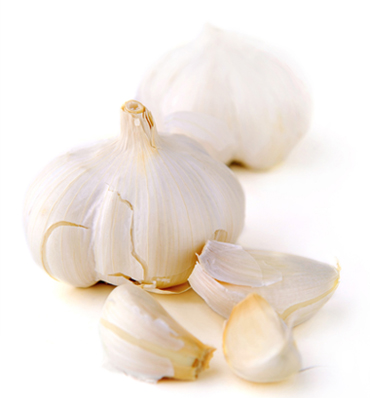[Jeong Jae-hoon’s Column on Food & Drug]
There's a common misconception about garlic's sweetness: that it contains three times more sugar than cola. The source of this misunderstanding is broadcast media. On November 12, 2005, KBS's “Sponge” aired a segment stating that garlic has a sweetness comparable to fruit. It claimed garlic tastes sweet because it contains high levels of fructans. Misleading information spread widely, suggesting garlic has a sugar content of 35-45 Brix -- twice that of bananas and three times that of watermelon -- making it intensely sweet, but its pungent taste and aroma mask this sweetness. Based on this, claims like “eating garlic with pork belly is a calorie bomb” or “garlic is the biggest enemy of dieting” were repeatedly aired on various TV programs afterward.

However, all these explanations are incorrect. Garlic contains a mere 0.23g of sugar per 100g. While it's true garlic has high fructan content, fructan itself isn't strongly sweet. Fructans are chains of fructose molecules. Unlike common sugars like fructose or glucose, they are difficult for the human small intestine to digest and absorb. Instead, they ferment in the large intestine by gut bacteria. Therefore, the calories in fructans are only 2 kcal per 1g, similar to oligosaccharides or dietary fiber. This is half the calories of simple sugars. As a prebiotic, fructans help produce short-chain fatty acids, which actually benefit health.
While Brix is commonly used to indicate fruit sweetness, this can also be misleading. Brix, named after the 19th-century German chemist Adolf Brix, measures the concentration of soluble solids in a solution. Its limitation is that Brix cannot distinguish whether the dissolved components are sugars or other substances. In most fruits, the majority of solids are sugars like sucrose, glucose, and fructose that impart sweetness, so Brix is often used as a proxy for sugar content. Garlic is different, however. The primary component of solids in garlic is fructan. Using Brix, one might mistakenly interpret garlic as being three times sweeter than watermelon, but garlic isn't that sweet. This is because fructans have a much weaker sweetness. It's not that the pungent flavor and aroma mask garlic's sweetness; garlic itself is simply not that sweet. Onions, chicory, and Jerusalem artichokes also contain high fructan levels but are similarly not sweet.
The savory aroma and umami flavor of roasted or fried garlic counteract the greasiness of pork belly and enhance its flavor. However, the caution when eating pork belly is about overeating the meat itself, not the garlic. It's problematic to portray garlic as a hidden enemy of dieting. It's rare for someone to eat 100g of garlic alongside grilled meat, but even if they did, it would only amount to a mere 128 kcal. Just because a claim was made on a broadcast 20 years ago doesn’t make it a fact. The media tends to favor sensational content that challenges common knowledge about food. It's time to set the record straight and clear garlic's name.

Jeong Jae-hoon is a food writer and pharmacist. He covers a variety of subjects, including trends in food, wellness, and medications. This column was originally published in Korean in Joongang Ilbo on Sept. 11 , 2025. – Ed.
Related articles
- [Column] Hidden advertising behind Wegovy reviews
- [Column] Coffee’s cancer scare is overblown
- [Column] It doesn’t have to be water
- [Column] What to eat for better sleep on summer nights
- [Column] Does mixing alcohol make you drunker?
- [Column] Is it safe to take medication and drive?
- [Column] How to choose a painkiller
- [Column] Why you should avoid late-night snacking
- [Column] How to deal with mosquitoes properly
- [Column] Who is health news really for?
- [Column] Misconceptions about protein intake

